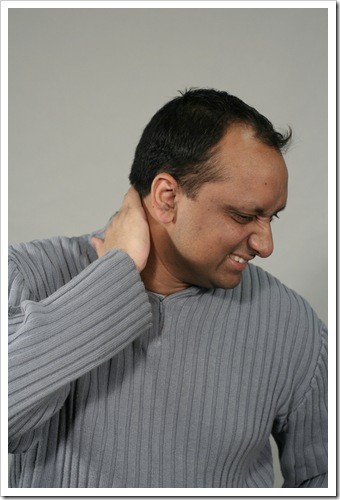 One day you wake up and you can’t move your neck. What happened? Did you sleep wrong? … No, I have slept the same way I’ve slept for years, but no matter which way I move I get a jabbing pain and there is no direction that is comfortable. Everything just feels tight.
One day you wake up and you can’t move your neck. What happened? Did you sleep wrong? … No, I have slept the same way I’ve slept for years, but no matter which way I move I get a jabbing pain and there is no direction that is comfortable. Everything just feels tight.
This is a story that is repeated year after year in my office. After speaking with most patients we can put our finger on something that may have contributed to their predicament, maybe a sports injury or car accident a few years back, a lifetime of shrugging their shoulder to hold a telephone to the ear, sleeping on their stomach or propping up their head with their hand while sitting in a classroom.
The beauty of the neck is that it is very flexible, and the tragedy of the neck is that it is very flexible with very little muscular stabilization. While it is obvious that trauma can cause an insult to its’ delicate joint structure, what is often overlooked is that the simplest habits we do can have such a lasting negative impact on our health. Take coupling the phone to the neck for instance. Once or twice, not a problem, but repeated several times per day over a lifetime, and most people only use one side of their neck to do this, gradually we overuse one side of the neck. One group of muscle contracts repeatedly which also has the effect of changing the alignment of the seven spinal bones of the neck. It doesn’t take much at this point to throw the “last straw on the camel’s back.” It could be a little added emotional stress that makes all the muscles in your neck contract pulling your “neck out.”
Now if we were only composed of muscles and bones our neck problems would be far less reaching. However, the spinal cord runs through a space in the vertebrae (spinal bones) sending nerve impulses to every part of the body. Between each pair of cervical vertebrae, the spinal cord sends off large bundles of nerves that run down the arms, up the back of the head and to some degree, the upper back. This means that if your arm is hurting, it may actually be a problem in the neck. Symptoms in the arms can include numbness, tingling, cold, aching, and “pins and needles.” Nerves also are involved in directing the immune response. We associate the neck and the upper back together, because most of the muscles that are associated with the neck either attach to or are located in, the upper back. These muscles include the trapezius, the levator scapulae, the cervical paraspinal muscles as well as others. One of the most common causes of neck pain, and sometimes headaches, is poor posture. It’s easy to get into bad posture habits without even realizing it – even an activity as “innocent” as reading in bed can ultimately lead to pain, headaches, and more serious problems. The basic rule is simple; keep your neck in a “neutral” position whenever possible. Don’t bend or hunch your neck forward for long periods. Also, try not to sit in one position for a long time. If you must sit for an extended period, make sure your posture is good: Keep your head in a neutral position, which is looking straight ahead with a backward “C” shape to the neck, and rest your arms if possible. Your knees should also be higher than your hip joint when sitting and your lower back should be supported.
While chiropractic’s successes with neck, shoulder and headache pains are well documented, it is not just a treatment for these problems. Chiropractors are dedicated to correcting abnormal spinal stress which is termed a subluxation. Unless corrected spinal subluxations can lead to many health conditions and can interfere with the normal healing process. Rather than masking the symptoms with medications that numb the body, chiropractors analyze the spine looking for abnormal joint function and nerve irritation. Once located, the goal is to normalize the affected area, primarily by adjusting the spine (specific manipulation of the joint), and at times use other physical modalities, allowing the body to heal itself. Should pain, numbness, tingling or the feeling that you just don’t feel 100% keep you from living the quality of life you expect, contact my office today. We’ll find you a convenient time and start you on your way to improved health.
